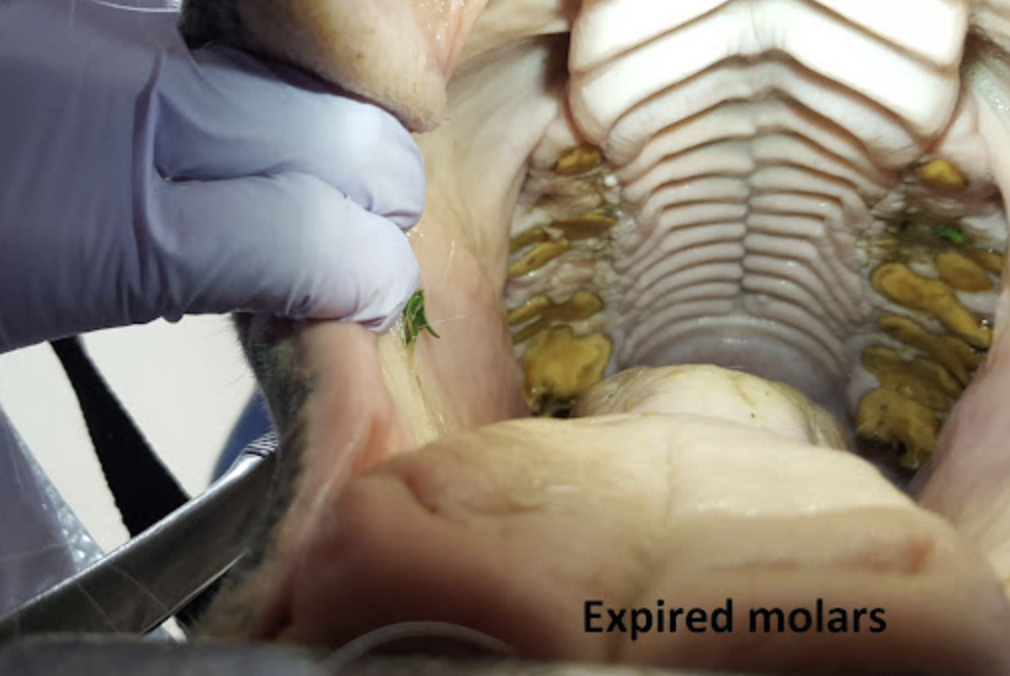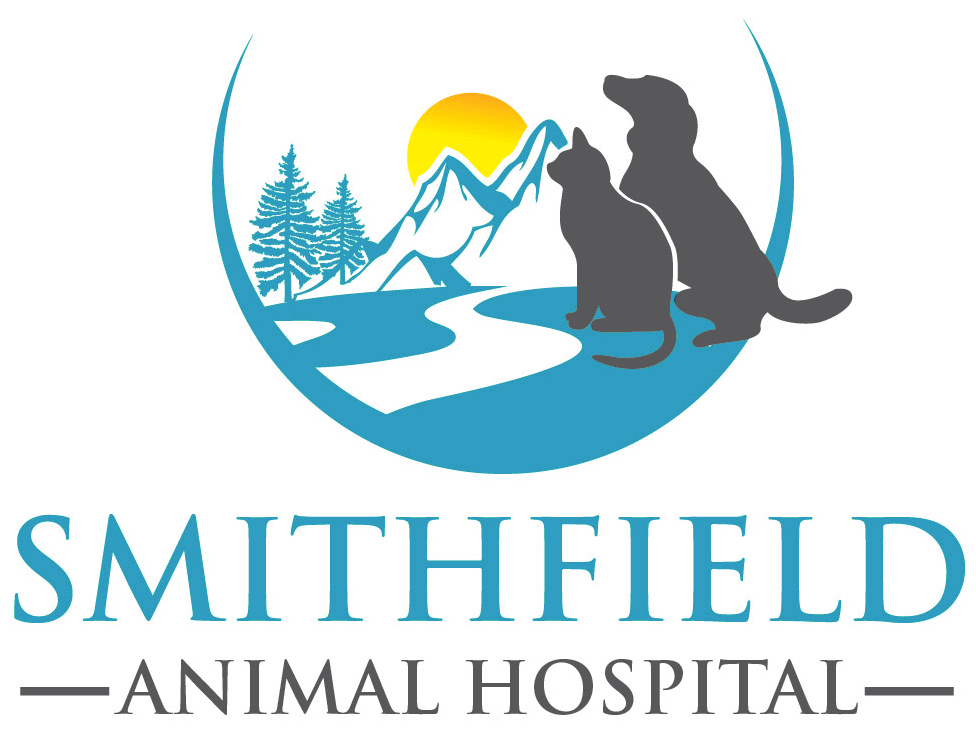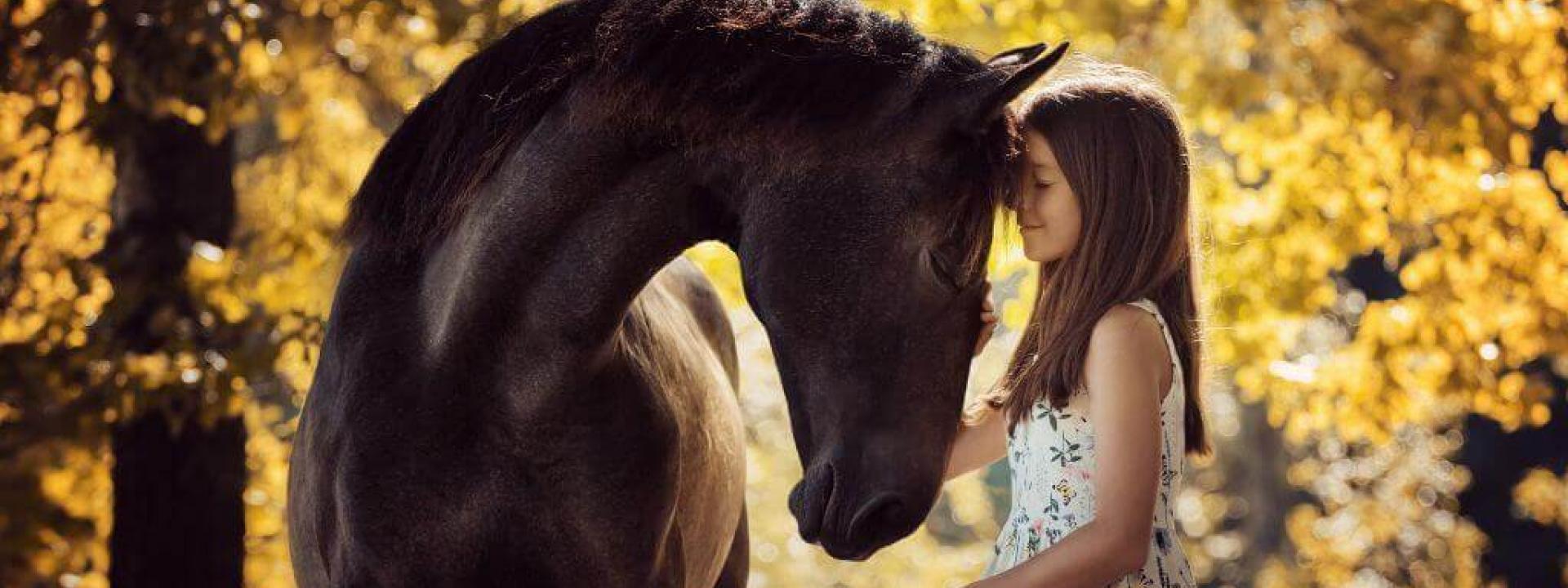Routine dental care is essential to your horse's health. Horses are hypsodont animals, meaning their teeth continue to erupt throughout their lives and are worn away by grinding feed material. Uneven wear can lead to painful dental problems and affect your horse's overall health. Young or old, your horse will benefit from a routine dental exam and maintenance, such as a float.
Common Dental Problems in Horses
As with anything, dental issues in horses vary from animal to animal, but there are some that we see more than others.
Some common dental problems we see in horses are:
- Sharp enamel points and hooks on the cheek teeth, causing ulcerations and lacerations of cheeks and tongue
- Excessively worn or abnormally long teeth
- Retained caps (baby teeth that are not shed)
- Fractured, displaced, or missing teeth
- Decaying or infected teeth
- Misalignment/poor apposition
- Periodontal (gum) disease

When Should My Horse Have A Dental Exam?
As a general recommendation, horses should have a thorough dental exam performed ANNUALLY, regardless of whether an issue is perceived or not.
Some important points to consider include when it comes to age and horse dental care are:
- Young horses (2.5 to 5 years old): This is when the most changes and dental maturation happen within the mouth. Between the ages of 2.5 and 5, horses will gradually shed their 24 deciduous (baby) teeth in exchange for 36-40 adult teeth. They are at risk of issues involving tooth eruption, including retained baby teeth, also known as caps. Sharp points should be floated, and any retained caps should be removed before the start of training.
- Adult horses (5-18 years old): The adult teeth, specifically the premolars and molars (cheek teeth), are very long, and their reserve crown/roots (part of the tooth that you cannot see) sit up within the facial bones and sinuses. Maintaining a correct bite plane during a horse's adult years is especially important to ensure a functional grinding surface in their senior years. Preventing dental problems is always best.
- Senior horses (18 years old or older): Around 18 years old, horses begin to run out of reserve crowns, and their cheek teeth gradually wear out. By 25, most horses' cheek teeth will be completely worn out. As teeth go out of wear, they become shorter, and as a result, the opposing teeth, which no longer have another tooth to grind against, can become overgrown. This creates odd steps and waves along the arcades of teeth. It becomes harder and harder for senior horses to chew their food efficiently, and they often require special nutritional support on top of regular dental care.
Keep in mind that any horse with a history of dental problems, especially those missing teeth, may require a dental exam and/or float bi-annually.
What Are The Signs Of Dental Disease?
As the horse's owner, it's imperative that you watch out for signs of dental disease, as some of them are more subtle than others.
Some common signs of dental disease in horses are:
- Halitosis (bad-smelling breath)
- Excessive drooling Quidding (dropping partially chewed food)
- Reduced appetite/difficulty eating/slow eating
- Food packing within cheeks
- Poorly digested food in manure
- Weight loss
- Behavior issues while under saddle, such as head tossing and difficulties steering
- Unilateral (one-sided) nasal discharge
Remember that just because your horse is not showing any obvious signs of dental disease does not mean all is well. In fact, only about 25% of horses with dental disease will show noticeable signs of dental disease. This is because horses, like most animals, simply adapt to their discomfort until the disease is a serious source of pain. Dental disease can also affect the horse's overall health and lead to potentially fatal ailments such as colic and choke (a fairly common condition that happens when food or another foreign body blocks the horse's esophagus).

What Is Involved In A Dental Exam And Float?
A complete dental exam, including visualization of the premolars and molars, requires sedation, a speculum, and good lighting. The sedation we use helps keep the horse comfortable and safe while its mouth is examined. It is a standing sedation, meaning the horse will remain standing during the procedure. Once sedated, a metal speculum is placed in the mouth to hold the mouth open. After the exam, a motorized dental instrument with carbide float blades, also known as a power float, is used to reduce sharp points, hooks, waves, etc.
This is not a painful procedure when performed correctly. The float blades are manufactured so that they don't damage the surrounding soft tissue structures. Floating usually takes 20 to 30 minutes, depending on the amount of work needed, and it usually takes another 20 to 30 minutes for the horse's sedation to wear off. Most horses can return to their usual routine the next day.
Routine dental care has so many benefits! It is essential to keep your horse comfortable as well as to help prevent dental problems from occurring. Your horse will also utilize feed more efficiently, may perform better, and may even live longer. Call our office today to schedule your horse's dental exam.

